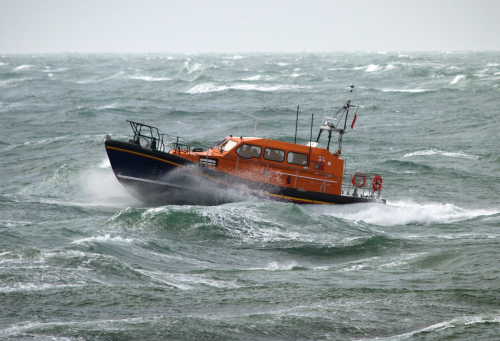
Austen emphasised that RNLI lifeboats have to be engineered for high performance and survivability in extreme conditions.
High-performance composites are the material basis for meeting the demanding specification of the latest FCB2 Shannon Class lifeboat, the first of which was accepted on 3 July.
This craft can maintain a speed of 22 kts in force 8 gale conditions, an improvement on the 17 kts in force 7 conditions possible with the existing Mersey class boats that it will replace.
The Institution has relied on the structural engineering and composites expertise of Gurit in engineering the Shannon boats to meet its onerous requirements.
'Lean' production
In order for the charity to ’get more from the same in a time of recession,’ as the speaker put it, the lifesaving charity has been overhauling its production strategy and processes.
Adopting lean techniques across the full design and production spectrum has so far enabled it to reduce costs by an average of some £300 per boat so that, cumulatively, there is significant saving.
| Adopting lean techniques across the full design and production spectrum has so far enabled it to reduce costs by an average of some £300 per boat ... |
Designing the new class (Shannon) for a 50-year service life, double that specified for the existing all-weather boat fleet, should help the RNLI avoid the boom and bust production cycle that surrounds the introduction of each new boat generation, to the inconvenience of itself and its suppliers.
A continuous rolling fabrication programme, under which a small number of boats will be produced each year, should even out the flow and smooth the production cycle.
The biggest change of all, however, is that the RNLI will, from next autumn, start producing its own lifeboats at a new factory in Poole, UK, rather than outsourcing the work to independent boat builders as happens now.
This will give the Institution direct control of the full production process, enabling it to integrate manufacturing activities more closely and apply ‘lean’ across the board.
This story is an excerpt from the feature article Conference highlights UK funding for boat composites, a report from the Boat Building Efficiently with Composites conference (2 July, Southampton, UK), organised by the Materials Knowledge Transfer Network and supported by the British Marine Federation (BMF) and the National Composites Centre (NCC).






